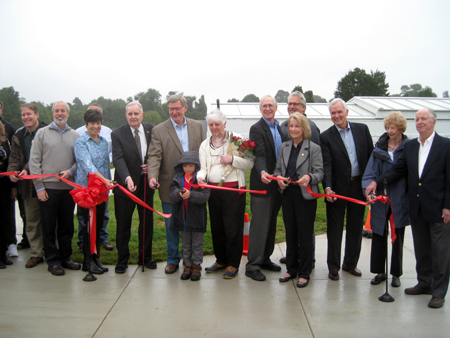What's New Under The Sun
Preparing for the Solar Eclipse of April 8th 2024
Sunday, 24 March 2024 18:30
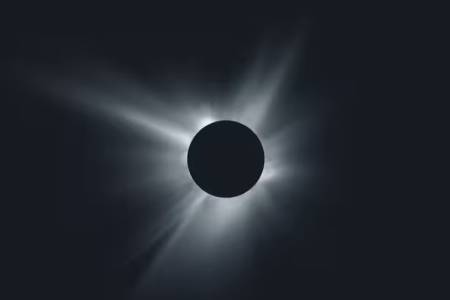 There are lots of maps showing where to go for the April 8th 2024 total solar eclipse and others showing the statistical chance of clouds such as https://www.washingtonpost.com/weather/2024/02/22/april-eclipse-clouds/ From Little Rock Arkansas to the Mazatlan coast there is a high probability of clear weather. The cities from Indianapolis through Cleveland OH, Rochester and Syracuse...
There are lots of maps showing where to go for the April 8th 2024 total solar eclipse and others showing the statistical chance of clouds such as https://www.washingtonpost.com/weather/2024/02/22/april-eclipse-clouds/ From Little Rock Arkansas to the Mazatlan coast there is a high probability of clear weather. The cities from Indianapolis through Cleveland OH, Rochester and Syracuse...
Seiko Designs Equatorial Sundial Watch
Sunday, 24 March 2024 01:42
 When is a watch not a watch? When it unfolds into an equatorial sundial. The watch, designed by Yu Ishihara is called a "Watch Exclusively for Sunny Men" and was part of a contest sponsored by Seiko to "help reimagine what a watch can be", aimed at creativity and perhaps for eventual production. Read about it at...
When is a watch not a watch? When it unfolds into an equatorial sundial. The watch, designed by Yu Ishihara is called a "Watch Exclusively for Sunny Men" and was part of a contest sponsored by Seiko to "help reimagine what a watch can be", aimed at creativity and perhaps for eventual production. Read about it at...
Rare Astrolabe Discovered by Chance in Verona Museum
Wednesday, 06 March 2024 00:17
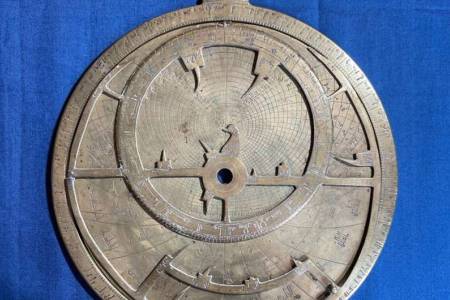 Dr. Federica Gigante, from Cambridge Univerity's History Faculty, discovered a rare astrolabe sequestered in a museum at Verona, Italy. Publishing in Nuncius (1 March 2024) Dr. Gigante presents "a hitherto unknown remarkable astrolabe from Al-Andalus which likely belonged to the collection of Ludovico Moscardo (1611–1681) assembled in Verona in the seventeenth century. The...
Dr. Federica Gigante, from Cambridge Univerity's History Faculty, discovered a rare astrolabe sequestered in a museum at Verona, Italy. Publishing in Nuncius (1 March 2024) Dr. Gigante presents "a hitherto unknown remarkable astrolabe from Al-Andalus which likely belonged to the collection of Ludovico Moscardo (1611–1681) assembled in Verona in the seventeenth century. The...
NASS 2024 Conference to be held in Vancouver, BC June 20-23
Friday, 23 February 2024 17:42
 The North American Sundial Society (NASS) will hold its 2024 conference in Vancouver, British Columbia, Canada from Thrursday June 20th to Sunday June 23rd. The conference will be held at the Fairmont Hotel Vancouver, 900 West Georgia Street, Vancouver BC. The conference will start Thursday afternoon with a traditional reception and sundial door prizes. Friday will be a...
The North American Sundial Society (NASS) will hold its 2024 conference in Vancouver, British Columbia, Canada from Thrursday June 20th to Sunday June 23rd. The conference will be held at the Fairmont Hotel Vancouver, 900 West Georgia Street, Vancouver BC. The conference will start Thursday afternoon with a traditional reception and sundial door prizes. Friday will be a...
World Sundial Day
Friday, 23 February 2024 16:53
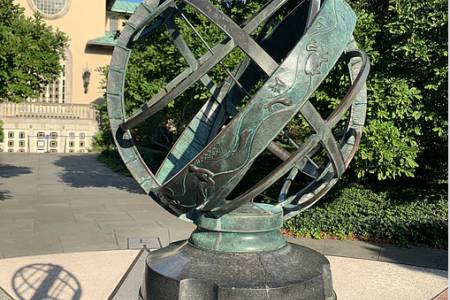 Spanish sundialist Esteban Martínez has launched the resolution to establish the World Sundial Day to occur each year on the Spring Equinox. According to the petition circulated by Martinez,
"Reason Sundials represent the union of disciplines as disparate as Astronomy, Mathematics, [and] Geography...They have an undoubted didactic value in teaching astronomy to young people and as...
Spanish sundialist Esteban Martínez has launched the resolution to establish the World Sundial Day to occur each year on the Spring Equinox. According to the petition circulated by Martinez,
"Reason Sundials represent the union of disciplines as disparate as Astronomy, Mathematics, [and] Geography...They have an undoubted didactic value in teaching astronomy to young people and as...
NASS Course "Elements of Dialing" Starts Jan 6, 2024
Saturday, 18 November 2023 18:21
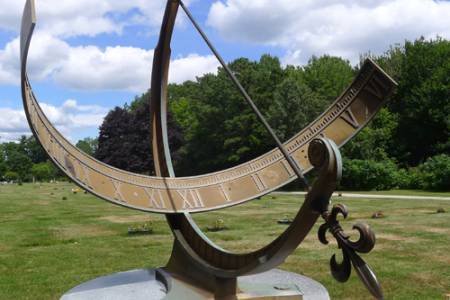 NASS is pleased to announce the upcoming third instance of Elements of Dialing, our introductory course about sundials, their history, and the science that makes them work. The free 13-lesson course, intended for those are new to sundialing, runs from January 2024. The course coordinator will be Steve Lelievre, our Secretary and editor of The Compendium. Steve will be assisted from time to time...
NASS is pleased to announce the upcoming third instance of Elements of Dialing, our introductory course about sundials, their history, and the science that makes them work. The free 13-lesson course, intended for those are new to sundialing, runs from January 2024. The course coordinator will be Steve Lelievre, our Secretary and editor of The Compendium. Steve will be assisted from time to time...
Smithsonian Photo Contest - Jaipur Sundial
Sunday, 05 November 2023 16:30
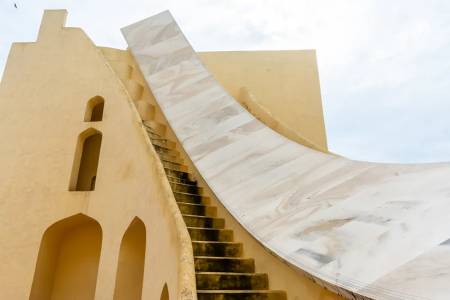 Smithsonian Magazine holds a photo-of-the-day contest. Winner on 30 Oct 2023 was Harita Sistu who took a photo of the large sundial of Jantar Mantar, Jaipur India (taken in July 2022). Harita notes: "I wanted to try my best to capture just how massive the instrument is and bring focus into the incredible skill that went into designing and constructing it."
See other NASS...
Smithsonian Magazine holds a photo-of-the-day contest. Winner on 30 Oct 2023 was Harita Sistu who took a photo of the large sundial of Jantar Mantar, Jaipur India (taken in July 2022). Harita notes: "I wanted to try my best to capture just how massive the instrument is and bring focus into the incredible skill that went into designing and constructing it."
See other NASS...
Houston Pavillion - World's Largest Sundial
Friday, 14 July 2023 23:08
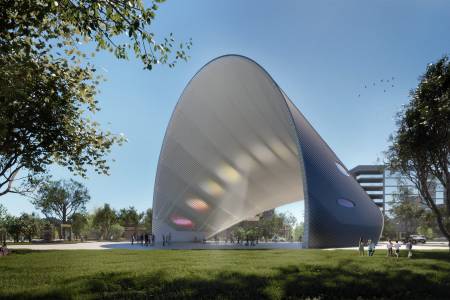 A sundial or performance center or solar generator? It's all three. Called the Arco del Tiempo (Arch of Time), the design by Berlin architect Riccardo Mariano provides the projection of the sun's rays onto the ground through tinted glass apertures spanning the length of its arching ceiling. The elliptical shaped spots change every hour, telling "the solar time each day and delight visitors with...
A sundial or performance center or solar generator? It's all three. Called the Arco del Tiempo (Arch of Time), the design by Berlin architect Riccardo Mariano provides the projection of the sun's rays onto the ground through tinted glass apertures spanning the length of its arching ceiling. The elliptical shaped spots change every hour, telling "the solar time each day and delight visitors with...
Sun Tower Update
Saturday, 01 July 2023 00:36
 According to NewAtlas.com (https://newatlas.com/architecture/sun-tower-open/), construction of the Sun Tower exhibition building and outdoor theater is underway in the Chinese city of Yantai. The tower is being constructed by a French firm, Ducks Sceno and the engineering firm Arup, raising to 50m (164 ft) gracefully into the sky. The tower symbolizes the historic watch towers of...
According to NewAtlas.com (https://newatlas.com/architecture/sun-tower-open/), construction of the Sun Tower exhibition building and outdoor theater is underway in the Chinese city of Yantai. The tower is being constructed by a French firm, Ducks Sceno and the engineering firm Arup, raising to 50m (164 ft) gracefully into the sky. The tower symbolizes the historic watch towers of...
Point of Infinity Hyperbolic Monument in San Francisco
Sunday, 25 June 2023 22:17
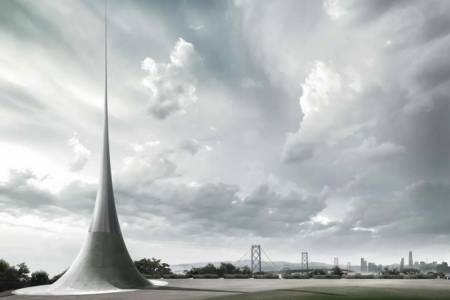 Julie Baumgardner in The Art Newspaper of Jan 13, 2023 reports on the construction project of Point of Infinity, a nearly 70 foot (21m) hyperbolic cone will reach toward the sky as part of a 50 million dollar park development on Treasure Island and Yerba Buena Island.
In a competition held by the San Francisco Arts Commision on behalf of the Treasure Island Development Authority, Hiroshi...
Julie Baumgardner in The Art Newspaper of Jan 13, 2023 reports on the construction project of Point of Infinity, a nearly 70 foot (21m) hyperbolic cone will reach toward the sky as part of a 50 million dollar park development on Treasure Island and Yerba Buena Island.
In a competition held by the San Francisco Arts Commision on behalf of the Treasure Island Development Authority, Hiroshi...
Ice Sculpture Ephemeral in Time
Thursday, 30 March 2023 00:03
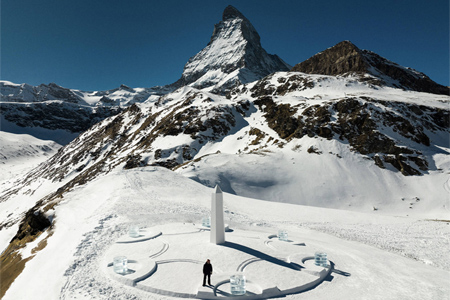 In the Swiss mountains near the resort of Zermatt just beneath the Matternhorn, Stir World reports that "famed luxury Swiss watchmaker Hublot announced Daniel Arsham as its new ambassador, with a compelling piece of temporary land art. Aptly titled "Light & Time", the work is a Hublot-inspired 20-metre sundial resting in the shadows of the Matterhorn mountain."
This sculptural is billed as...
In the Swiss mountains near the resort of Zermatt just beneath the Matternhorn, Stir World reports that "famed luxury Swiss watchmaker Hublot announced Daniel Arsham as its new ambassador, with a compelling piece of temporary land art. Aptly titled "Light & Time", the work is a Hublot-inspired 20-metre sundial resting in the shadows of the Matterhorn mountain."
This sculptural is billed as...
New Sundial for Kika Silva Pla Planetarium
Sunday, 18 December 2022 23:00
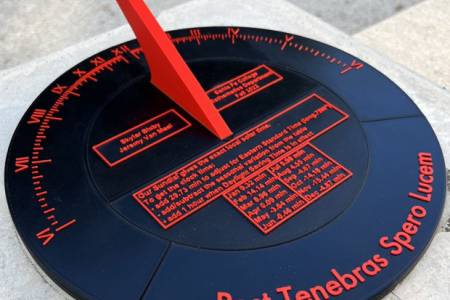 Sklar Bixby and Jeremy Meel, students at Santa Fe College in Florida took on a project to design and 3D-print a new sundial for the Kika Silva Pla Planetarium in Gainesville Florida (located on Santa Fe's Northwest Campus). Under the guidance of Dr. Philip Pinon, Sklar and Jeremy took on a semester long project as part of the Exploring Honors Mathematics class. They designed a horizontal sundial...
Sklar Bixby and Jeremy Meel, students at Santa Fe College in Florida took on a project to design and 3D-print a new sundial for the Kika Silva Pla Planetarium in Gainesville Florida (located on Santa Fe's Northwest Campus). Under the guidance of Dr. Philip Pinon, Sklar and Jeremy took on a semester long project as part of the Exploring Honors Mathematics class. They designed a horizontal sundial...
Roll-Top Ribbon Cutting
- Details
- Hits: 10474
|
|
Amid the rain and cloudy skies, on Saturday October 1st, 2016, a ribbon-cutting ceremony officially opened the Roll-Top Observatory at Observatory Park, Turner Farm in Great Falls, VA. Tim Hackman, Dranesville District representative of the Fairfax County Park Authority (FCPA) Board, introduced all those who made the Roll-Top observatory possible through public-community-and-private funding. Initiated in 2007 in collaboration with the Analemma Society, the million-dollar facility was funded in part by the 2008 and 2012 Park Bonds, telecommunications funds, Mastenbrook grant money and a donation provided by Jean and Rick Edelman through the Fairfax County Park Foundation.
Ground breaking for Roll-Top began in 2014 and over the next two years the Roll-Top Observatory design by architects Shaffer Wilson Sarver & Gray of Herndon, VA, was carried out by the construction company Brown and Root of Arlington, VA.
Sundial Outreach Success
- Details
- Hits: 12973
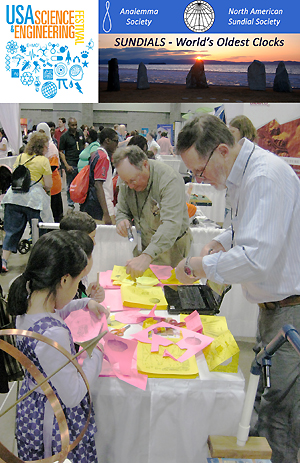 |
This year nearly 300,000 students, parents and teachers attended the 3rd USA Science and Engineering Festival in Washington DC during 25-27 April 2014. The Analemma Society and the North American Sundial Society jointly featured a very successful booth to encourage science, technology, engineering and mathematics (STEM) through sundials. The Analemma Society and NASS were among hundreds of exhibits from universities, scientific organizations, government agencies, and companies in the defense and educational industries.
Volunteers from the Analemma Society and NASS demonstrated a number of sundial types and provided paper sundial cut-outs that were enjoyed by children, students, parents and teachers alike. They handed out over 1400 of the sundial cut-outs, with the classic horizontal sundial and Briggs polar dial being the most popular. Especially important were the numerous contacts made with teachers who will now enhance their science classes with sundials.
Volunteers from the Analemma Society and NASS who made this outreach possible were Ken Clark, Jeff Kretsch, Bob Kellogg and Dru Anne Neil. They did a terrific job explaining that indeed, sundials are the world’s oldest clocks.
In the photo at left NASS member Ken Clark and Analemma Society member Jeff Kretsch show how sundials work while you dialists cut out their sundials.
Sundials at STEM Festival
- Details
- Hits: 14216

Members of The North American Sundial Society and Analemma Society will be participating in the 3rd USA Science & Engineering Festival. Mark your calendars for Saturday and Sunday April 26 and 27th at the Walter E. Washington Convention Center in Washington DC. This is a Science, Technology, Engineering and Mathematics (STEM) exposition. In recognition of the Festival’s role in making STEM a national priority, Congress recently designated the last week in April as National Science Week.
NASS and the Analemma Society along with other expo presenters have more than 3,000 hands-on activities. NASS and the Analemma Society will introduce students and families to a variety of sundials and offering hands-on activities to cut them out and test them using a solar heliograph. It's all free. Come and learn about Sundials – The World’s Oldest Clocks.
The Science & Engineering Festival will also have a book fair—complete with signings by well-known science authors. Bill Nye the science guy will be there as well as Mike Rowe (Dirty Jobs on Discover Channel), Nate Bell (Design Squad on PBS) and the cast and crew from TV shows like Big. Bang Theory, as part of over 100 live stage performances.
Old News is New
- Details
- Hits: 9824
Building on the success of the 2010 USA Science & Engineering Festival, the North American Sundial Society and Analemma Society joined nearly 1500 other activities at the Expo in Washington DC on April 28-29, 2012 presenting "Sundials, the World's Oldest Clocks". That's the old news. The new twist is that Ken Clark of NASS made it to youtube describing sundials. You can watch too:
USA Science & Engineering Festival
- Details
- Hits: 10429
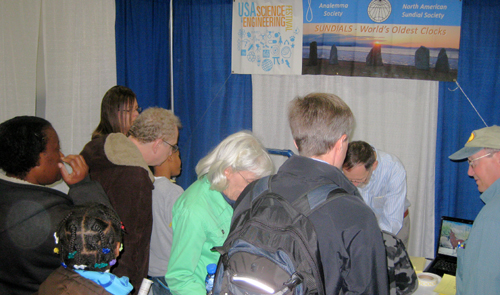 On April 28-29, the North American Sundial Society and Analemma Society participated in the USA Science & Engineering Festival in Washington DC, presenting “Sundials – The world’s oldest clocks” at the Walter E. Washington Convention Center in Washington D.C.
On April 28-29, the North American Sundial Society and Analemma Society participated in the USA Science & Engineering Festival in Washington DC, presenting “Sundials – The world’s oldest clocks” at the Walter E. Washington Convention Center in Washington D.C.
Photo shows opening day with Ken Clark and Jeff Kretsch helping students learn about sundials while parents look on. A great first day at the Science and Engineering Festival. And the second day was equally exciting.
Parents, teachers, students, and children of all ages were able to participate in over 3,000 hands-on science and engineering activities. On stage among many others was Bill Nye the Science Guy and Adam Savage and Jamie Hyneman, hosts of the Discovery Channel's Mythbusters.
Volunteers from the North American Sundial Society and The Analemma Society talked to over 1000 attendees about sundials, sundial history, and making paper sundials to show how sundials work
.
Parents Donate Sundial
- Details
- Hits: 10044
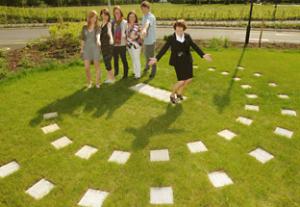
Mark and Clare Hoggart have three daughters, all of whom attended and graduated from the Joseph Rowntree school in the UK. Now, in appreciation, the Hoggarts have donated an analemmatic sundial to the school, saying, “It’s just a thank-you for getting the girls through their education. They have all got on really well and have blossomed into lovely young ladies. We want to thank them for the effort they have shown them as individuals.” The sundial has been installed outside the science block.
The Hoggarts, who own an ornamental gardenware company, have already received orders from others who are interested in a similar installation. See the NASS website on dial construction for further plans to build an analemmatic sundial.
Sundials on the Mall 2012
- Details
- Hits: 17989

NASS and the Analemma Society, inspired by the success of the 2010 USA Science and Engineering Festival, are registering for the Festival on the Washington D.C. Mall. The event, supported by volunteers from both NASS and the Analemma Society is scheduled for the Spring of 2012.
NASS and the Analemma Society will have a booth to teach families and children how to make sundials and read sundial time with the theme: Sundials, the Worlds Oldest Clocks.
We expect the return of many of the sundialist volunteers that supported the 2010 Festival. For the coming year, we expect to improve our educational goals beyond the popular “Great Sundial Cutout.” What else is in store? Stay tuned as we formulate our educational material. Have and idea? Please send an email toRobert Kellogg
For more information on all Festival events and how you can get involved, visit www.usasciencefestival.org.
Astronomy Teaching Tools - Sundials, Globes, Astrolabes and More
- Details
- Hits: 4572
John Krieger, a former science teacher, is a strong supporter of STEM in the classroom and science in the real world. Bollards at Laguna Nigel in southern California might offer the opportunity to teach a bit of astronomy.
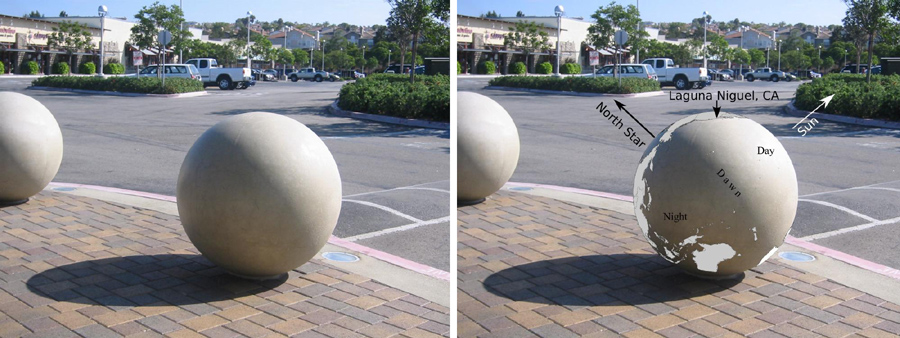
John says, "I don’t mean to imply that every concrete curb stop should be turned into an astronomical instrument. But why can’t we have more of these things around us? The ‘globe sundial’ is not an original idea of mine. People have actually made them, but they are depressingly rare....Sometimes someone does go to the trouble of making a beautiful, scientifically literate public display, and places it in full view of the everyday public, and even provides instructions..." 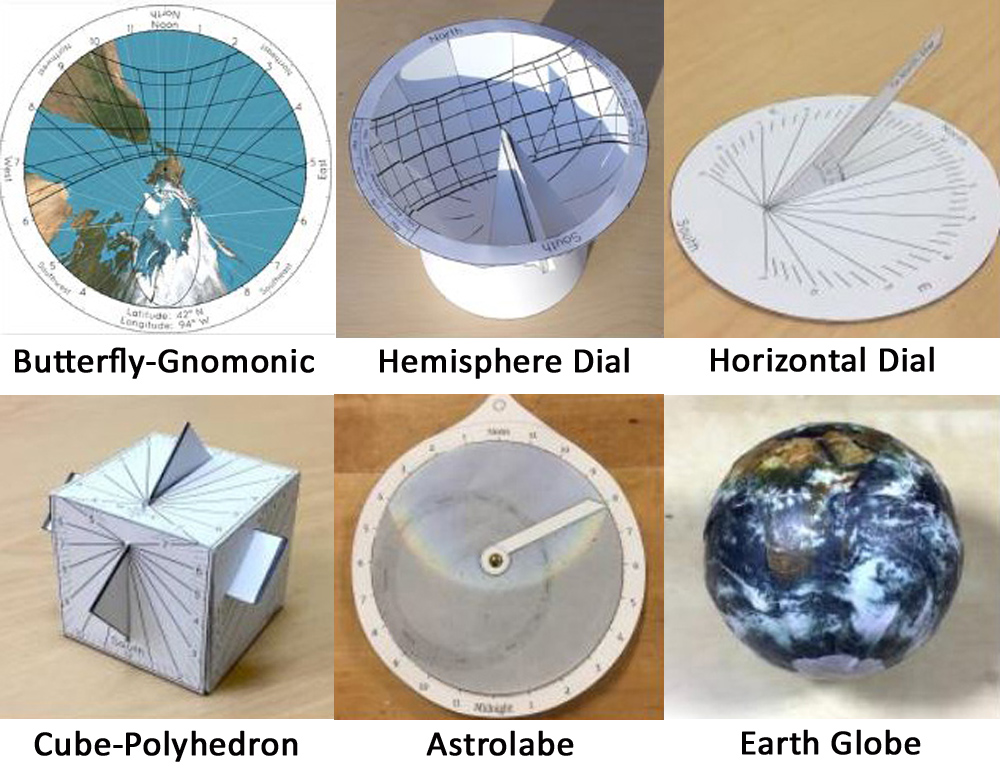 Many of these public displays are sundials and during John's career, he developed aids to teach astronomy to schoolchildren. At his website, he makes an array of paper sundials, globes, astrolabes and quadrants available in PDF form for printing and easy constructing to make an accurate sundial or globe with explanation of how it works. "Most of them are printable PDF files that you can download and give to kids to label, cut out, and use as the basis of some activity... Officially, I am making all of these works available under a Creative Commons — Attribution License, which means you may do anything you like with them, as long as you give me credit as the creator."
Many of these public displays are sundials and during John's career, he developed aids to teach astronomy to schoolchildren. At his website, he makes an array of paper sundials, globes, astrolabes and quadrants available in PDF form for printing and easy constructing to make an accurate sundial or globe with explanation of how it works. "Most of them are printable PDF files that you can download and give to kids to label, cut out, and use as the basis of some activity... Officially, I am making all of these works available under a Creative Commons — Attribution License, which means you may do anything you like with them, as long as you give me credit as the creator."
And don't worry about adjusting for latitude. His paper instruments are available for download at every 10 degrees of latitude from 60 deg south to 60 deg north, which for example would be appropriate for use in Reykjavik, Iceland. In North America, 20 degrees covers lower Florida, 30 degrees is suitable for southern California, 40 degrees works for the big US east coast cities, and 50 degrees is appropriate for Calgary in the heart of Alberta.
Downloads available at: https://www.astronomyforthinkers.com/downloads/
For the Hemispherical Dial, go to: https://www.instructables.com/A-Hemispherical-Paper-Sundial/
Sundial Atlas Paper Sundials
- Details
- Hits: 14179
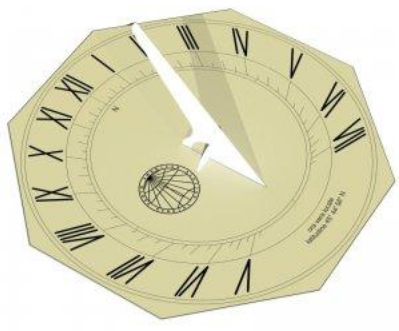 Need a small sundial for your display or science project? Want to show how different sundials cast shadows? Need a simple cut-out science exercise for your students? Fabio Savian of Milan Italy has the solution. For a number of years he has managed the Sundial Atlas website, ever increasing the number of sundial photos from around the world. Over the last several years he has worked very hard to create the gnomolab that includes a solar compass map of the earth, cloud software for creating analemmatic (human shadow) sundials, and a section for making paper sundials to your specification. The analemmatic dial measurements and papger dial designs are created as download PDF files. Four of those dials were created by the North American Sundial Society. Enjoy. Sundial Atlas Paper Sundials
Need a small sundial for your display or science project? Want to show how different sundials cast shadows? Need a simple cut-out science exercise for your students? Fabio Savian of Milan Italy has the solution. For a number of years he has managed the Sundial Atlas website, ever increasing the number of sundial photos from around the world. Over the last several years he has worked very hard to create the gnomolab that includes a solar compass map of the earth, cloud software for creating analemmatic (human shadow) sundials, and a section for making paper sundials to your specification. The analemmatic dial measurements and papger dial designs are created as download PDF files. Four of those dials were created by the North American Sundial Society. Enjoy. Sundial Atlas Paper Sundials

